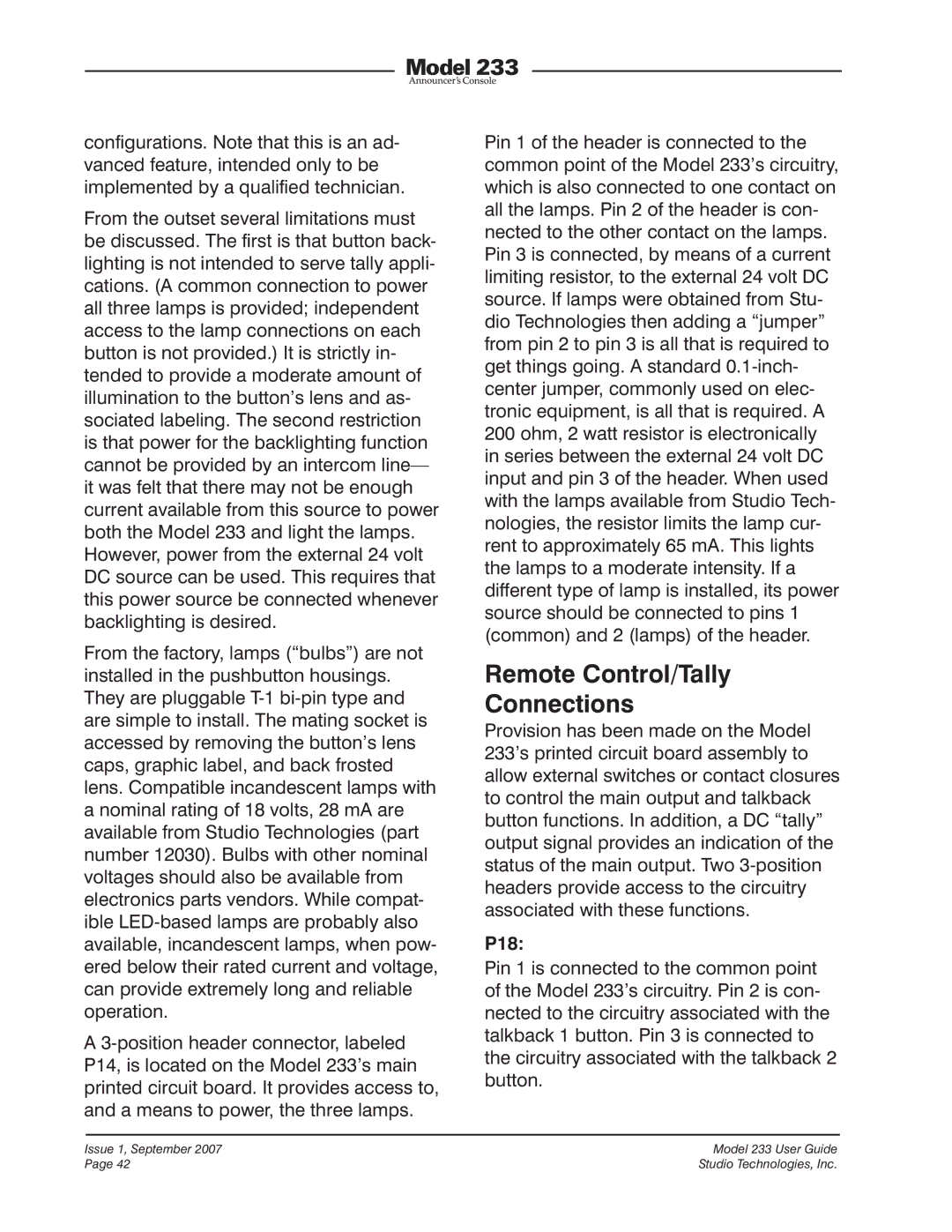
configurations. Note that this is an ad- vanced feature, intended only to be implemented by a qualified technician.
From the outset several limitations must be discussed. The first is that button back- lighting is not intended to serve tally appli- cations. (A common connection to power all three lamps is provided; independent access to the lamp connections on each button is not provided.) It is strictly in- tended to provide a moderate amount of illumination to the button’s lens and as- sociated labeling. The second restriction is that power for the backlighting function cannot be provided by an intercom line— it was felt that there may not be enough current available from this source to power both the Model 233 and light the lamps. However, power from the external 24 volt DC source can be used. This requires that this power source be connected whenever backlighting is desired.
From the factory, lamps (“bulbs”) are not installed in the pushbutton housings. They are pluggable
A
Pin 1 of the header is connected to the common point of the Model 233’s circuitry, which is also connected to one contact on all the lamps. Pin 2 of the header is con- nected to the other contact on the lamps. Pin 3 is connected, by means of a current limiting resistor, to the external 24 volt DC source. If lamps were obtained from Stu- dio Technologies then adding a “jumper” from pin 2 to pin 3 is all that is required to get things going. A standard
Remote Control/Tally
Connections
Provision has been made on the Model 233’s printed circuit board assembly to allow external switches or contact closures to control the main output and talkback button functions. In addition, a DC “tally” output signal provides an indication of the status of the main output. Two
P18:
Pin 1 is connected to the common point of the Model 233’s circuitry. Pin 2 is con- nected to the circuitry associated with the talkback 1 button. Pin 3 is connected to the circuitry associated with the talkback 2 button.
Issue 1, September 2007 | Model 233 User Guide |
Page 42 | Studio Technologies, Inc. |
